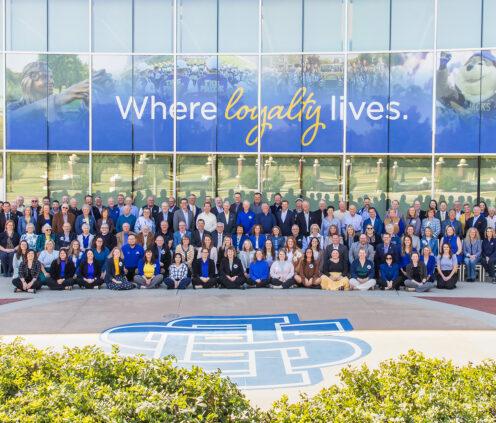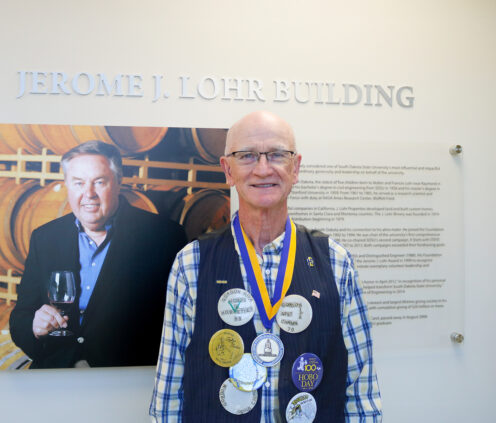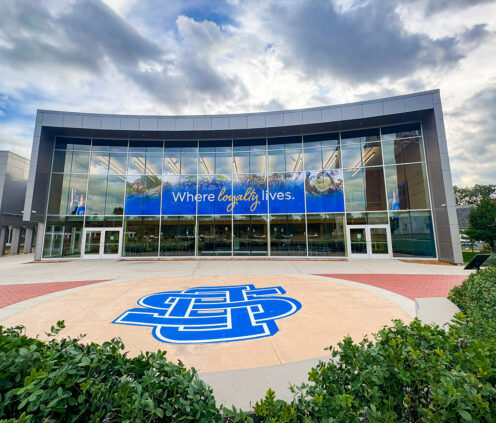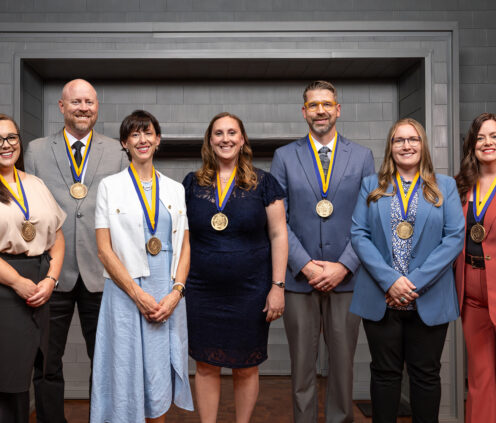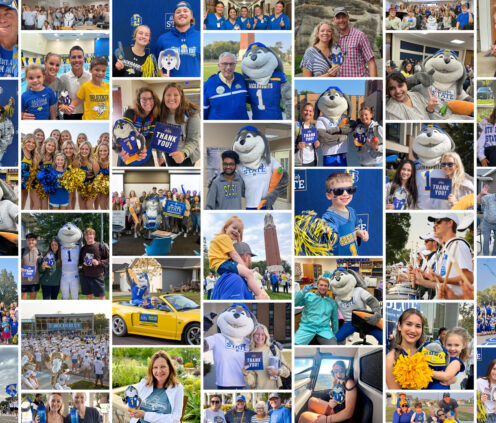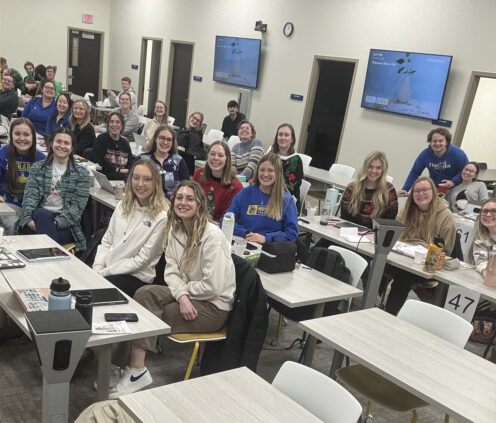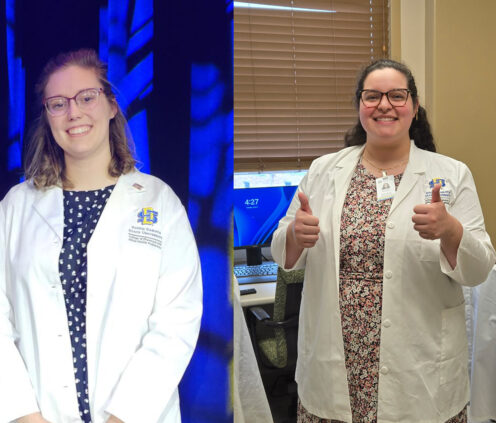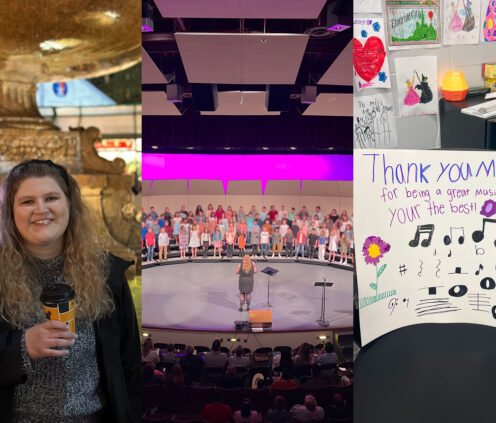Research and Rapport Under One Roof
Dr. Erin Miller’s many roles at SDSU revolve around research – and she believes the SDSU Metro Center will fuel momentum for each of them.
For Dr. Erin Miller, the SDSU Metro Center will work perfectly in tandem with the mission around which she’s dedicated her career: to address community needs and fill gaps in existing care.
Joining South Dakota State in January 2020, Erin serves as an assistant professor for the College of Pharmacy and Allied Health Professions, as well as interim director of the Community Practice Innovation Center (CPIC). She’s also involved with the Master of Public Health department. Each of these roles will be enhanced by the addition of the SDSU Metro Center in Sioux Falls, and Erin’s eager to see what comes next.
With the many projects and responsibilities comprising her day-to-day, Erin lives and breathes research and innovation. As interim director of the CPIC, she works alongside communities to address ongoing challenges and needs. The CPIC isn’t a physical space, but a compilation of public health research initiatives in local communities, building infrastructure and support for researchers in the College of Pharmacy and Allied Health Professions. Erin is also deeply involved in a project for the CDC focusing on access to care and chronic disease management, identifying necessary improvements that can be fulfilled by pharmacists.
Another initiative on her resume is the START-SD project, revolving around prevention, treatment, and recovery resources for substance use disorders. START-SD applies to the prison system, aimed at helping individuals released from incarceration and preparing to transition back to society. Each of these roles requires a heavy emphasis on research and community involvement, fueling the public health arena – and exactly fitting for the purpose and goals behind the SDSU Metro Center.
Erin MillerThe Metro Center is a place where we can host qualitative research, educational opportunities, professional development opportunities, focus groups, interviews, and community conversations. It’s about asking the community what their needs are and how we can fill those gaps.
Once construction is complete, the SDSU Metro Center will feature teaching and learning areas, research space for pharmacy students, nursing simulation labs, staff offices, student study spaces, and offices for SDSU Connect, enrollment, and distance learning staff. Ideally located on 33rd and Minnesota with proximity to major health care giants like Avera and Sanford, the facility is expected to train as many as 400 students per year. Expanding the university’s footprint in Sioux Falls, the center will heighten visibility and exposure to SDSU, bolster collaboration for our students and faculty, and impact the countless communities who will someday benefit from the future health care professionals taught at the facility.
Of the many values inherent to the SDSU Metro Center, Erin cites the environment of collaboration as one of the most significant. The center will act as a hub for cross-discipline training for all kinds of health care professionals, from nurses to pharmacists to respiratory therapists to public health experts like Erin herself. The facility is also expected to build opportunities for collaboration between students, faculty, and health care workers currently in the workforce. A steady supply of students will be available to participate or volunteer in Erin’s research projects as they arise, and Erin notes that staff and health care professionals already in Sioux Falls will have easy access to an SDSU outpost.
“By pulling us into the Metro Center and creating a space that is intentionally designed to facilitate the needs of our different professions, we have those tools at our fingertips to teach across disciplines,” Erin explains. “We’ll be in that same space, where we’ll naturally start talking with others and fostering intentional collaboration across groups.”
Another benefit of the center is the increased visibility and exposure for the university. The building will act as a gathering place where alumni can come for events and where potential students may be recruited. With plenty of multipurpose flex space, the facility is intentionally designed to bring people together for conversations, host meetings and lectures with key stakeholders, fuel workforce development, and supplement the work of the Brookings campus in a more heavily populated area.
“The Metro Center’s informal space for students to collaborate, meet with faculty, and just to really mimic the campus atmosphere will help create a sense of community,” says Erin. “It helps facilitate that unique university experience and will be beneficial for them as they become professionals in the workforce.”
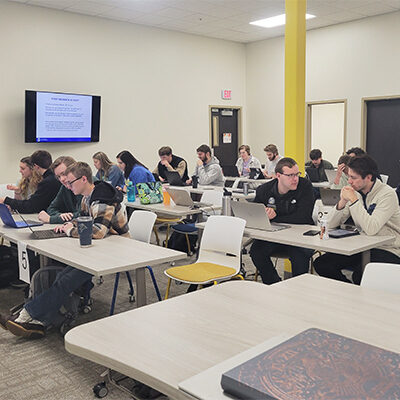
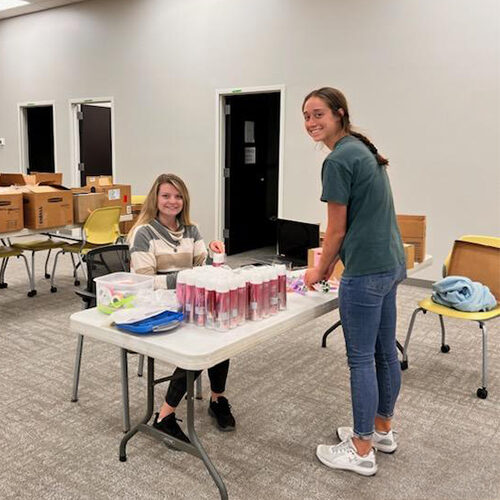

While the center is expected to officially open its doors in summer 2026, Erin is already dividing her time between the construction zone and the Brookings campus. With a front row seat to the renovation action, she’s already witnessed the impact of the SDSU Metro Center, long before it’s fully up and running. High school students interested in becoming Jackrabbits have poked their noses into the new facility, intrigued by the SDSU footprint broadening to the Sioux Falls area. Every day, thousands upon thousands of motorists cruise by, taking note of the university name adorning the building. Above all, health care professionals continue to make bold plans for the future, united under one roof in the heart of the state’s largest city.
As a public health expert, Erin’s all about research – and when it comes to the SDSU Metro Center, the results already speak for themselves.
“We’re figuring out how to give back to people, to reach people better, to meet needs. I would tie it all back to the university,” Erin reflects. “Our growth and development and our culture and who we are – that’s what the SDSU Metro Center represents.”

